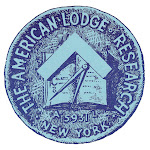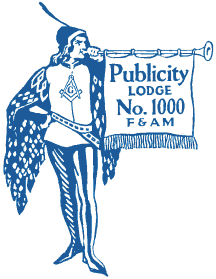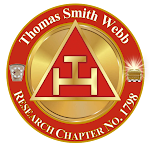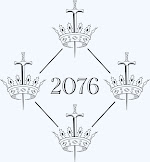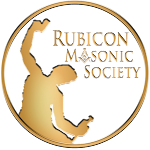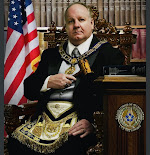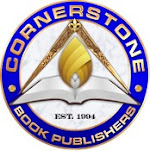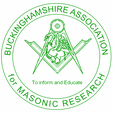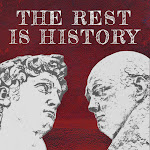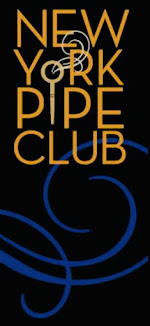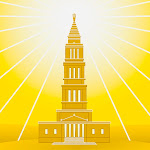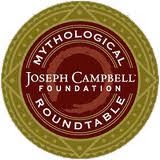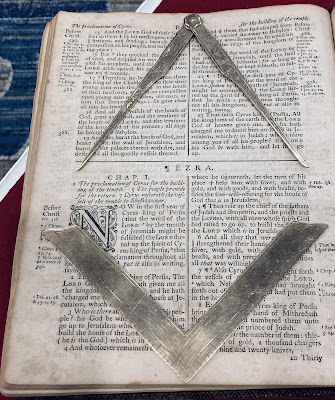As reported here last Saturday, the Observant Masonry movement in the Grand Lodge of New York is recently reinvigorated with a newly staffed and small committee of practitioners that has promulgated new guidelines for winning the OM certification.
Chairman Bradley Hubbard was kind enough to send me the committee’s publication. While I can’t reproduce the eighteen pages here, I’ll summarize many key points that probably ought to be explained to those who misunderstand what this is all about. Excerpted:
▶︎ A common misconception is that a Lodge so acutely focused on the ritualistic, educational, and esoteric aspects of the Craft tends to lack in the fraternal, social, and charitable pursuits that many Masons pride themselves on. This is mistaking the light for the flame. The fraternal, social, charitable and other elements of Masonry are natural consequences of practicing Masonry as Masonry was intended to be practiced. The
innate culture of excellence that exists within Observant Lodges actually serves to strengthen and amplify these aspects of Masonic culture. Simply put; where Observance is present, Freemasonry thrives.
▶︎ It is a widespread misunderstanding that the OM title is meant to elevate a Lodge above its peers in either prestige or exclusivity. Quite the contrary, the intention behind this designation is that the adherent Lodge has dedicated itself to the service of the Craft at large as an exemplar and emissary of the Observant Masonry movement. An OM Lodge deliberately conveying “holier than thou” airs would therefore be acting in contradiction to the spirit and intention of this program.
▶︎ There are two common paths toward establishing Masonic Observance within a Lodge. Neither is easier than the other per se, but one or the other may not even be possible within a particular region or district. The first is
to “convert” an existing Lodge to an Observant model, which requires a culture shift of some magnitude depending on the composition and trajectory of the membership. In this case, achieving a critical mass of members in favor of the initiative becomes of utmost importance. Conversion basically entails modifying the culture of a Lodge over a period of time to come into alignment with the guidelines and requirements of Observant Masonry in our jurisdiction. This is an excellent way to ensure the long-term success of a Lodge or it can be an effective way of “rescuing” an otherwise failing Lodge at risk of dissolution by converting it to the
Observant model.
The second is to establish a new Lodge based on the Observant model from its inception. This is far more laborious as it requires the formal warranting of a new Lodge and the immense amount of work that goes along with it, not only clerically but the acquisition of ceremonials, securing a meeting place, overcoming potential political opposition, etc. Sometimes though, this may be the best or only option available in a particular region. Once the Lodge is formally established, careful and selective increase through affiliation and initiation is necessary to maintain Observant culture over time. The Lodge needs a clear plan for growth and succession to sustain itself past the initial enthusiasm of its founding members as well as a strong inculcation of the tenets of Masonic Observance to maintain critical mass.
▶︎ An unfortunate statistic is that most OM Lodges last an average of about five years before they either dissolve, merge, or convert back to a mainstream Lodge culture. Feedback suggests the reason behind this is that the initial enthusiasm which propelled the Lodge forward eventually waned, particularly as the original “movers and shakers” moved through the chairs and were replaced by others who were less versed in Observant Masonry.
This is why a Lodge-wide inculcation of the tenets of Masonic Observance and a strong plan of succession is critical to its longevity. As previously stated, the level of excellence an OM Lodge aims for requires an enormous amount of energy to maintain. If it is not a larger ensemble effort, those who primarily shoulder the burden can only do so for but so long.
What follows are many specifics that comprise the curated OM lodge experience. These are not secrets to regular readers of The Magpie Mason, but to quickly summarize several:
• Keeping the lodge building and grounds attractive.
• Maintaining all lodge room furnishings, regalia, etc.
• Decorum in lodge: dignified attire, no phones, use of candles and incense. (I’m big on incense.)
• Discriminating choice in selecting officers.
• Ritual excellence.
• Festive Boards.
Then there are details on the most important matters, namely candidate selection and the candidate’s experience. Excerpted:
▶︎ Guarding the West Gate: This is far more than a catch phrase. Prospects for initiation or affiliation in an OM Lodge should undergo careful and scrutinous selection involving a multi-stage process. A version of the current Northstar program customized to the Lodge’s needs and culture should be defined and implemented.
▶︎ Cost of admission: Oftentimes a higher than average initiation and affiliation fee is associated with Observant Lodges. This is both to discourage those lacking a serious interest in Observant Masonry and to offer the Lodge funding to provide candidates with additional resources and experiences during their process of advancement. Many associate value directly with price, so setting a somewhat higher than average bar to admission heightens the expectations of what is to be gained on the other side.
▶︎ Acceptance letters: It is good practice to notify candidates of their acceptance and scheduled degrees by formal letter mailed to their residence. Attention should be given to the presentation as well as content. A Lodge letterhead on quality stationary, hand signed by an appropriate officer, perhaps with embellishments like a wax seal over a cord/ribbon makes a substantial impression and sets the right tone for all that is to come.
▶︎ Number of candidates per degree: Creating a bespoke experience for each Candidate is critical on several levels. In an ideal situation it is one candidate per degree.
▶︎ Interval between degrees: Although it is common for a candidate to progress through the degrees over the course of a few months, elsewhere and previously in Masonry it takes much longer. Observant Masonry espouses this concept and generally allows candidates to progress at a pace that mirrors their proficiency.
▶︎ Heightened proficiency: As OM Lodges expect more from their officers, so should they expect more from their candidates. The proficiency required in the form of Masonic catechism or “Q&As” should be as close to perfection as it is deemed that particular candidate is capable of achieving. The delivery should occur in open Lodge in front of the Brethren, with the decision of proficiency resting with the Master by right.
▶︎ Mentorship: A candidate should not be expected to navigate these waters alone. The purpose of joining a Lodge is to receive guidance and assistance from those who have gone this way before. This is not limited to the proficiency work associated with each degree or even matters of practical worldly assistance.
▶︎ Education: Candidates should be exposed to an organized course of study related to each degree that includes the required catechism, a reading curriculum, and exposure to degree-appropriate education programs through the Lodge. Since candidates generally take longer to progress under this model, OM Lodges can take advantage of opening on the EA and FC degrees to allow them to actively participate in the Lodge’s Communications which will naturally include education and discussion.
Other aspects of the experience:
• Procession of officers.
• Uses of sound and music.
• Times for silence/meditation.
• “Light from the East” candle ceremony.
• Chain of Union.
And then there’s the Chamber of Reflection, which is analyzed in a separate appendix. Of all the characteristics of the Observant ethos, the Chamber of Reflection surely is the most debated. Previous editions of New York’s Standard Work, as I recollect, mentioned a Chamber of Reflection, but this was described as the Preparation Room with the addition of a candle. It wasn’t the room full of symbolism concerning transformation and mortality borrowed form the European tradition. To quote just two sentences from the guidelines: “In the most general sense, the purpose of the Chamber of Reflection is to provide a candidate the opportunity
for meditation and introspection in a place set apart from the profane world they’ve just come from. Similar to the various Observant practices Masons use to set their Lodge room and ritual apart from the profane world without, the Chamber is a tool employed to offer Candidates the same opportunity.”
Under Supplemental Resources, I am pleased to see the Knights of the North’s literature, as well as Andrew Hammer’s Observing the Craft, among other suggested readings.
Under Candidate Course of Study, three sets of books, one for each degree, are recommended, and they are by the same authors: Carl Claudy, Robert Lund, and W.L. Wilmshurst.
The OM designation is not necessary to ensure an amazing lodge experience, but the practices that would earn a lodge that designation are required, an opinion I base on my twenty-eight years of experience in the Craft. In fact, I’m getting on in years, and I don’t know what my involvement in the fraternity will look like after my thirtieth anniversary, so don’t ask me what today’s busy young men might expect from a Masonic experience. I know only that we ought to project excellence. Impressive and thoughtful reports of committees aside, the high standards we need are defined in our ritual text Standard Work and Lectures of Ancient Craft Masonry.
Still, I must congratulate the Observant Masonry Committee, and I hope more lodges work toward OM certification.












